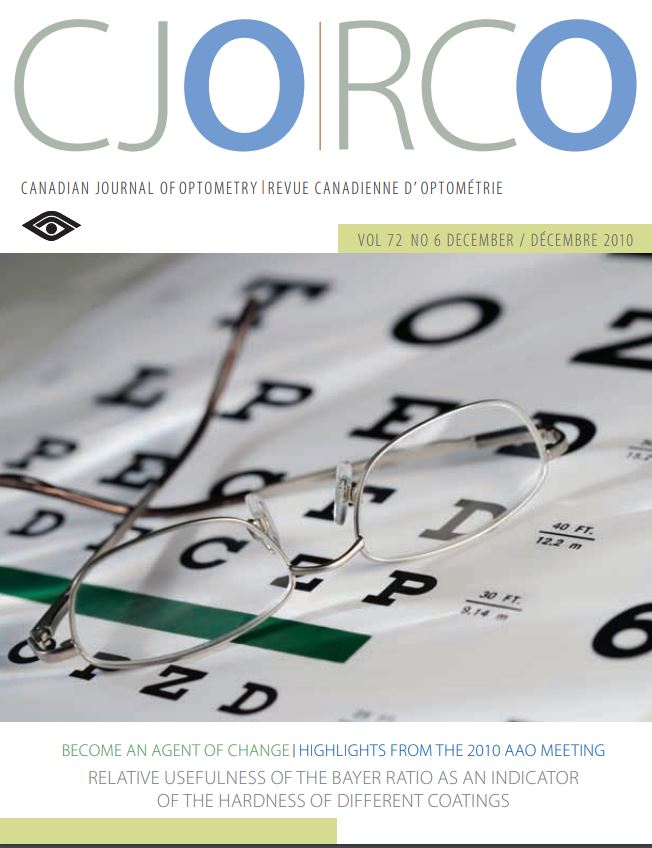Relative usefulness of the Bayer ratio as an indicator of the hardness of different coatings
DOI:
https://doi.org/10.15353/cjo.72.606Keywords:
Bayer ratio, coatings, anti-scratch, antireflective, ophthalmic lensesAbstract
Purpose: To show that with better performance of scratch-resistant coatings on plastic lenses, the use of the Bayer ratio does not appropriately discriminate between recently introduced products.
Methods: Nine groups of 5 to 10 CR-39 lenses were ordered with various scratch-resistant treatments. All the lenses underwent the Bayer test on the same apparatus. Haze was measured using a Cary5000 spectrophotometer equipped with an integrating sphere.
Results: The lens groups with the latest generation of anti-scratch treatments show a significant decrease in diffusion. The variability of the Bayer ratio increases depending on whether the quotient is obtained by calculating the ratio using the minimal haze values or the maximum haze values. When the Bayer ratio is greater than 10, it no longer discriminates between the products satisfactorily.
Conclusions: This test, or others, will inevitably have to be refined to increase precision and give a better perspective of the quality of the next generation of scratch-resistant coatings.
Published
How to Cite
Issue
Section
License
Copyright (c) 2010 Benoît Frenette, Valentina Lucea

This work is licensed under a Creative Commons Attribution-NonCommercial-NoDerivatives 4.0 International License.


